Related Research Articles

A banana is an elongated, edible fruit – botanically a berry – produced by several kinds of large herbaceous flowering plants in the genus Musa. In some countries, bananas used for cooking may be called "plantains", distinguishing them from dessert bananas. The fruit is variable in size, color, and firmness, but is usually elongated and curved, with soft flesh rich in starch covered with a rind, which may be green, yellow, red, purple, or brown when ripe. The fruits grow upward in clusters near the top of the plant. Almost all modern edible seedless (parthenocarp) bananas come from two wild species – Musa acuminata and Musa balbisiana. The scientific names of most cultivated bananas are Musa acuminata, Musa balbisiana, and Musa × paradisiaca for the hybrid Musa acuminata × M. balbisiana, depending on their genomic constitution. The old scientific name for this hybrid, Musa sapientum, is no longer used.

The pecan is a species of hickory native to the southern United States and northern Mexico in the region of the Mississippi River. The tree is cultivated for its seed in the southern United States, primarily in Georgia, New Mexico, Texas, and Mexico, which produces nearly half of the world total. The seed is an edible nut used as a snack and in various recipes, such as praline candy and pecan pie. The pecan is the state nut of Alabama, Arkansas, California, and Texas and is also the state tree of Texas.
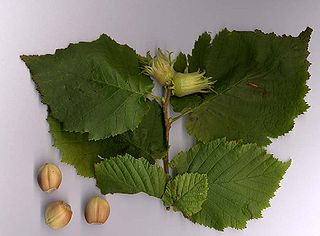
Corylus avellana, the common hazel, is a species of flowering plant in the birch family Betulaceae. It is native to Europe and western Asia. It is an important component of the hedgerows that were the traditional field boundaries in lowland England. The wood was traditionally grown as coppice, the poles cut being used for wattle-and-daub building and agricultural fencing.

Juglans regia, the Persian walnut, English walnut, Carpathian walnut, Madeira walnut, or especially in Great Britain, common walnut, is an Old World walnut tree species native to the region stretching from the Balkans eastward to the Himalayas and southwest China. It is widely cultivated across Europe.
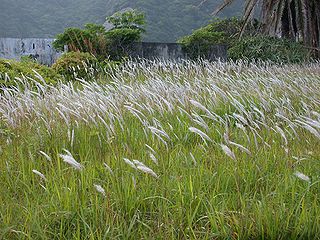
Imperata cylindrica is a species of perennial rhizomatous grass native to tropical and subtropical Asia, Micronesia, Melanesia, Australia, Africa, and southern Europe. It has also been introduced to Latin America, the Caribbean, and the southeastern United States. It is a highly flammable pyrophyte, and can spread rapidly by colonizing disturbed areas and encouraging more frequent wildfires.
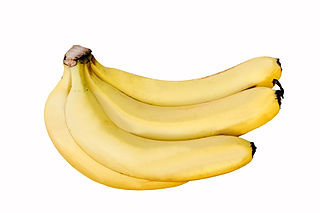
Cavendish bananas are the fruits of one of a number of banana cultivars belonging to the Cavendish subgroup of the AAA banana cultivar group. The same term is also used to describe the plants on which the bananas grow.

The honeydew melon is one of the two main cultivar types in Cucumis melo Inodorus Group. It is characterized by the smooth rind and lack of musky odor. The other main type in the Inodorus Group is the wrinkle-rind casaba melon.
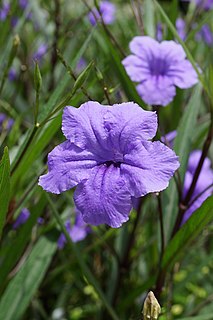
Ruellia simplex, the Mexican petunia, Mexican bluebell or Britton's wild petunia, is a species of flowering plant in the family Acanthaceae. It is a native of Mexico, the Caribbean, and South America. It has become a widespread invasive plant in Florida, where it was likely introduced as an ornamental before 1933, as well as in the eastern Mediterranean, South Asia and other parts of the eastern hemisphere.

The University of Florida Institute of Food and Agricultural Sciences (UF/IFAS) is a teaching, research and Extension scientific organization focused on agriculture and natural resources. It is a partnership of federal, state, and county governments that includes an Extension office in each of Florida's 67 counties, 12 off-campus research and education centers, five demonstration units, the University of Florida College of Agricultural and Life Sciences, three 4-H camps, portions of the UF College of Veterinary Medicine, the Florida Sea Grant program, the Emerging Pathogens Institute, the UF Water Institute and the UF Genetics Institute.

Ligustrum japonicum, known as wax-leaf privet or Japanese privet is a species of Ligustrum (privet) native to central and southern Japan and Korea. It is widely cultivated in other regions, and is naturalized in California and in the southeastern United States from Texas to Virginia.
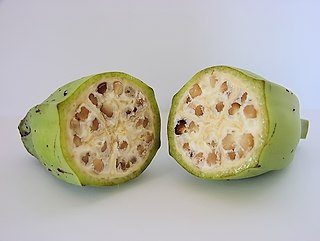
Musa balbisiana, also known simply as plantain, is a wild-type species of banana. It is one of the ancestors of modern cultivated bananas, along with Musa acuminata.

Rhino Horn bananas, also called Rhino Horn plantains or African Rhino Horn, are hybrid banana cultivars from Africa. It produces strongly curved and elongated edible bananas which can grow to a length of two feet, the longest fruits among banana cultivars.

Musa acuminata is a species of banana native to Southern Asia, its range comprising the Indian Subcontinent and Southeast Asia. Many of the modern edible dessert bananas are from this species, although some are hybrids with Musa balbisiana. First cultivated by humans around 10 kya, it is one of the early examples of domesticated plants.

Saba banana, is a triploid hybrid (ABB) banana cultivar originating from the Philippines. It is primarily a cooking banana, though it can also be eaten raw. It is one of the most important banana varieties in Philippine cuisine. It is also sometimes known as the "cardaba banana", though the latter name is more correctly applied to the cardava, a very similar cultivar also classified within the saba subgroup.

Fe'i bananas are cultivated plants in the genus Musa, used mainly for their fruit. Unlike most other cultivated bananas they are diploids of the AA-type. They are very distinct in appearance and origin from the majority of bananas and plantains currently grown. Found mainly in the islands of the Pacific, particularly French Polynesia, Fe'i bananas have skins which are brilliant orange to red in colour with yellow or orange flesh inside. They are usually eaten cooked and have been an important food for Pacific Islanders, moving with them as they migrated across the ocean. Most are high in beta-carotene.
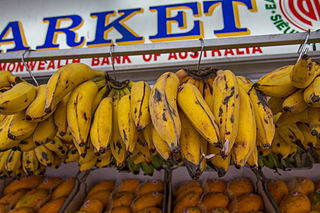
Lady Finger bananas are diploid cultivars of Musa acuminata. They are small, thin skinned, and sweet.

Musa 'Pisang Awak' is an edible banana cultivar belonging to the AABB banana cultivar group. This cultivar is grown worldwide.

Musa × paradisiaca is the accepted name for the hybrid between Musa acuminata and Musa balbisiana. Most cultivated bananas and plantains are triploid cultivars either of this hybrid or of M. acuminata alone. Linnaeus originally used the name M. paradisiaca only for plantains or cooking bananas, but the modern usage includes hybrid cultivars used both for cooking and as dessert bananas. Linnaeus's name for dessert bananas, Musa sapientum, is thus a synonym of Musa × paradisiaca.
Flhorban 920 (FB920) is a synthetic banana hybrid developed as a cultivar of banana naturally resistant to Black and Yellow Sigatoka fungi in an attempt to replace the highly susceptible Cavendish banana. Additionally, FB920 has been shown to improve root resistance to Burrowing nematodes.
References
- 1 2 "Musa Orinoco". Bananas Wiki. 2021-12-28. Retrieved 2021-12-28.
- 1 2 "HS10/MG040: Banana Growing in the Florida Home Landscape". Electronic Data Information Source (EDIS). Institute of Food and Agricultural Sciences (IFAS), UF. 2020-01-06. Retrieved 2021-12-28.
- ↑ Ploetz, Randy C.; Kepler, Angela Kay; Daniells, Jeff; Nelson, Scot C. (February 2007). "Banana and plantain—an overview with emphasis on Pacific island cultivars" (PDF).
- ↑ "Musa Germplasm Information System". Explore Banana Diversity. 1998-01-01. Retrieved 2021-12-28.
- ↑ "Bluggoe subgroup". ProMusa Improving the understanding of banana. 2020-07-16. Retrieved 2021-12-28.
- ↑ Florian, Yvonne (2020-06-03). "Growing Bananas in Florida". Institute of Food and Agricultural Sciences (IFAS), UF Extension Indian River County. Retrieved 2021-12-28.
- ↑ "Musa Banana Trees". Home Guides SF Gate . 2012-03-28. Retrieved 2021-12-28.
- 1 2 3 "Musa 'Orinoco'". Plant Finder Missouri Botanical Garden . Retrieved 2021-12-28.
- ↑ "Banana - Fruit & Nut Resources Fruit & Nut Resources". Aggie Horticulture Texas A&M College of Agriculture and Life Sciences . 2021-08-21. Retrieved 2021-12-28.
- ↑ "Banana". Purdue University . Retrieved 2021-12-28.
